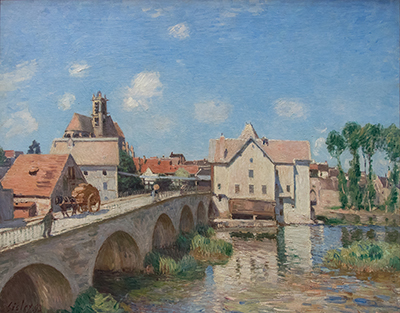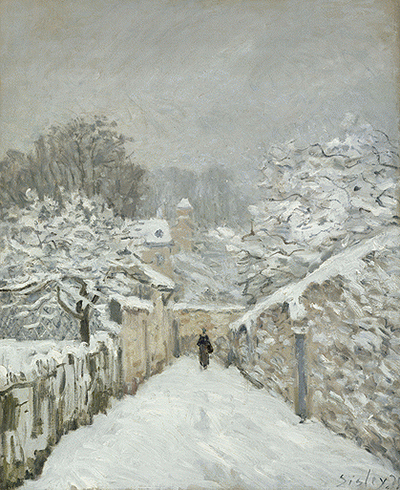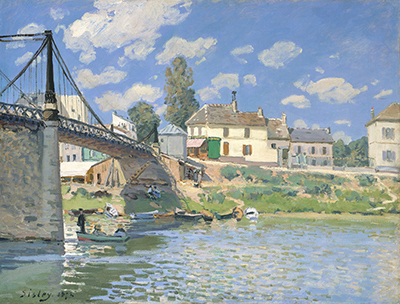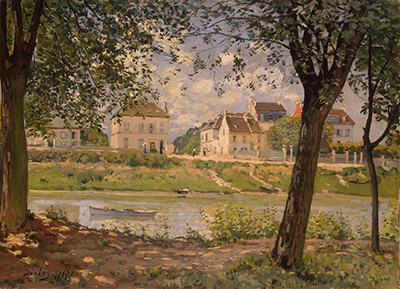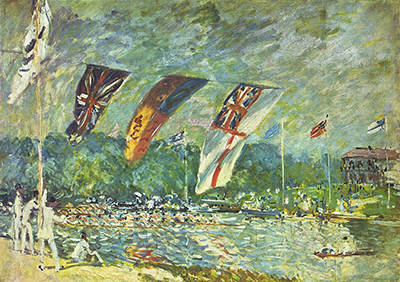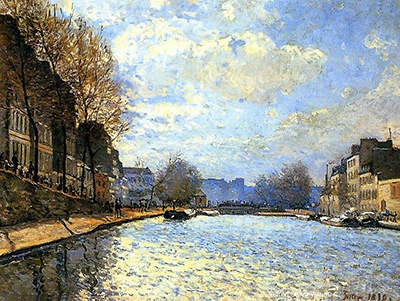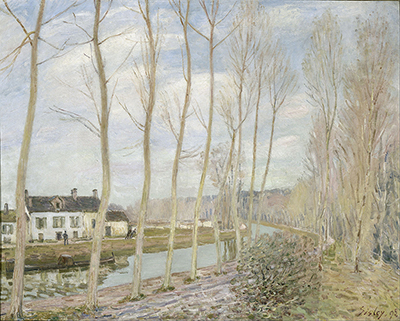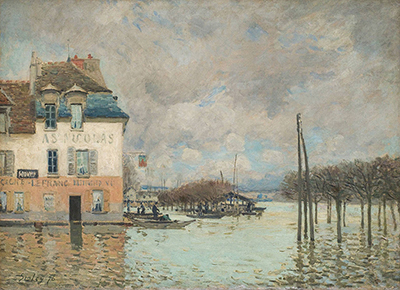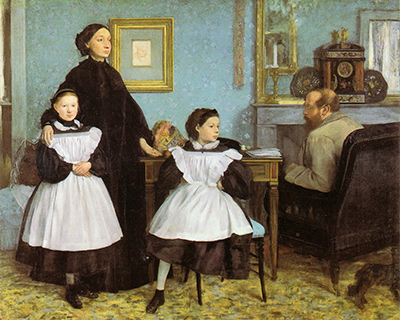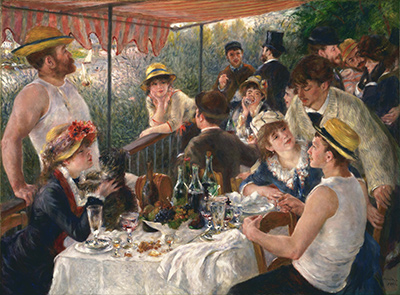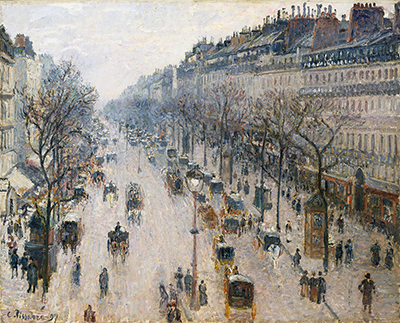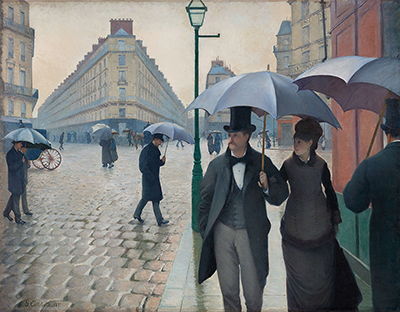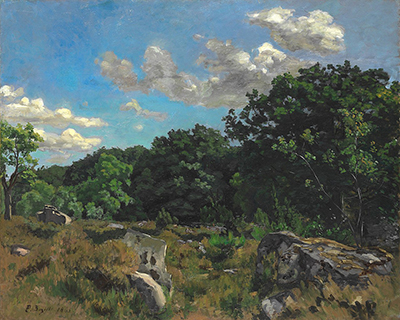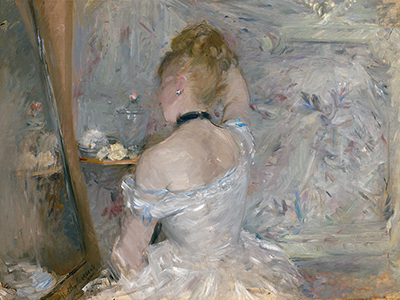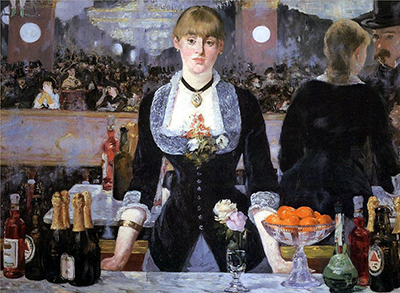The Bridge at Moret by Alfred Sisley is loosely dated to around 1893 and is entirely typical of this French-based British painter.
Introduction
Moret provides the backdrop to this significant artwork within the career of Impressionist, Alfred Sisley. Water ways, be it rivers or canals, would feature prominently within his work, with The Bridge at Moret being just one example of the influence left upon him by the likes of John Constable.
Description
The scene captures a river running beneath an arched bridge. The latter leads through to an urban area, with rooftops appearing in terracotta tones. The bridge is carefully angled by the artist to provide perspective, as it angles in from the bottom left hand corner of the composition. The upper half of the work is dominated by a bright blue sky, with just a few white fluffy clouds dotted about.
Vertical balance is provided by a series of trees to the right hand side, which reach up to around the tops of the houses. There is also a reflection from this side of the bank which adds more variety of colour to the relatively tranquil river. The arches to the bridge also bring shading into the scene in what is otherwise a bright and upbeat piece.
Across the bridge we find small touches of life, with one man walking across the bridge, perhaps in order to start a working day. There is also a horse and cart which adds to the rural feeling of this small town, or large village. Moret itself was well known to the artist, and he produced a number of other paintings whilst here.
The artist produced another scene featuring the same bridge in 1888, with a more open expanse of water from this alternative angle, further down the bank. As with all of the Impressionists, Sisley was always striving for new angles, conditions and locations in order to continue his love affair with cityscapes and landscapes.
Technique and Colour
Sisley's artistic style has often been compared to Monet, with some suggesting that he lacked the same level of passion or expression which was found elsewhere within the Impressionist movement. Sisley was precise and consistent, technically sound, and this enabled him to generate a strong following, even if his reputation did not hit the heights of other members of the group.
Sisley makes use of two main colour groups for The Bridge at Moret. Firstly, there are the natural tones of blues and greens coming from the trees, sky and river. There are then the manmade elements such as the houses, the bridge itself, and various boats - all of these colours then reflect across the river itself.
Location
The Bridge at Moret can now be found in the collection of the Musée d'Orsay, who themselves offer a fine selection of work from the Impressionist era, as part of their overall display. The artist himself would feature bridges several times within his career, and found water to be an excellent tool within his compositions, with its ability to reflect light and colour from other parts of the scene.
Large Image
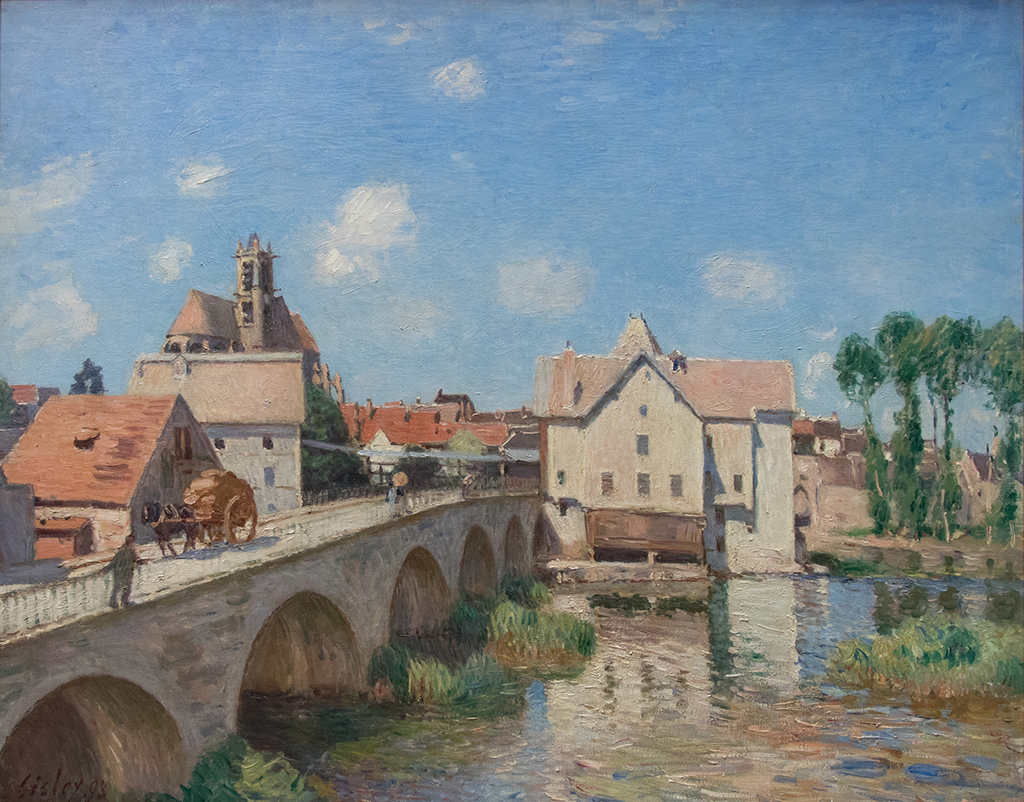 The Bridge at Moret in Detail by Alfred Sisley
The Bridge at Moret in Detail by Alfred Sisley
More Impressionist Artists



